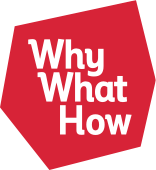It’s not knowing ‘who’ customers are; it’s knowing what they need to get done!
Let me introduce you to Mitch (he’s the short, fluffy guy in the picture above).
A few years ago, Mitch developed a small tumour on his rear leg, which quickly grew to a massive size – bigger than a grapefruit.
Our vet checked it out, but didn’t leave us with much hope. At best, Mitch would lose the leg and much of the tissue around it. And at worst? Well…the worst would be the worst we could imagine.
When something like this happens to your family pet, you realise just how much they depend on you.
Mitch couldn’t call the vet or get himself there. He couldn’t describe how he felt or whether he was afraid. He certainly couldn’t speak for himself or express a view about his various treatment options.
Yet he needed all these things to be done. Along with all the normal daily ‘jobs’ he required – preparing and serving his food, getting exercise, going to the toilet, grooming his coat and, no less importantly, being loved and made a fuss of.
Thinking back on this time, it occurred to me that Mitch (just like your Bella, Max or Tiger) is actually the ultimate customer.
And for me to maximise my relationship with this very important customer, I must very clearly understand what it is he needs to get done.
But this seems kind of basic, doesn’t it?
Well maybe. But for many of us, as we go about the challenge of trying to maximise the quality of relationships we have with our business customers, it’s not what we do.
What we seem to focus on more is knowing about our customers and potential customers. Where do they live? How much do they earn? What’s their favourite colour? How old are they? Which descriptive ‘box’ can we best fit them into?
Yet if I’d taken this approach with Mitch, would it have helped? Knowing which city he lives in, or what colour his coat is, or even his favourite food or TV program would have given me a lot of information about him – but nothing that would enable me to serve him in an especially meaningful way.
And when you think about it, the companies we consider most successful are those who have best understood the jobs their customers need to get done.
Often, when their customers haven’t even realised it.
Apple iPhones are owned by all kinds of different people with very different personal circumstances. Uber rides are great whether your tall or short, male or female, and regardless of where you live. Boost Juice is just as healthy and tastes great whether your 5 or 95.
But all these products do for us something we need to get done – one or more jobs that would be more difficult, more expensive or more time-consuming to do on our own.
What each of these businesses has done, very successfully, is to recognise inadequately performed jobs in customers’ lives, and then design experiences, products or processes around those jobs.
And ultimately, that’s all we did with Mitch.
He wasn’t great at driving or taking public transport, so we provided a personal taxi service to the vet.
He couldn’t articulate his concern about becoming a three-legged dog, so we advocated for him, imploring the vet to come up with another option, if at all possible.
He intensely disliked the taste of the experimental chemotherapy medication that the vet prescribed, so we mushed it up in his favourite dog food.
And then we waited.
And waited.
Until, amazingly… it worked!
The tumour shrank, just a little more each day, and eventually it completely disappeared.
And Mitch is now living happily into a ripe old age (nearly 80, in dog years).
More importantly, Mitch is an incredibly loyal, loving and devoted member of our family.
And isn’t that exactly what we want our customers to be?
Ross Clark is the founder of Melbourne-based strategic consultancy, WhyWhatHow. He has more than thirty years’ experience helping businesses innovate, grow and manage change.
Learn more here about how to evolve the why, what and how of your organisation.

